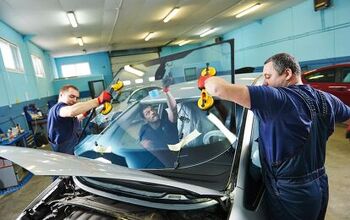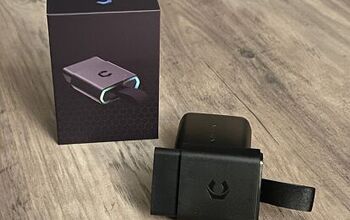How to Properly Wash Your Car

Washing a car may seem like a straightforward task, but there is an actual method to ensure you’re doing a proper job. It may seem as basic as hosing down your car and using a mitt to wipe off all the dirt and grime, but there’s a reason why professional detailers charge a good amount of money. If you’re looking to give your car some attention and making sure it not only looks brand new but continues to shine for months to come, follow our steps below on how to properly wash your car.
Table of contents
1) Park Your Car in the Shade
You should try your best to wash your car in the shade and out of direct sunlight. This will keep your car wash shampoo from drying before you can rinse, as well as preventing water spots from appearing on the surface of your car and windows. You’ll also want to try to wash your car on a relatively calm day, since wind or even a breeze can kick particles of dirt back onto your wet car.
Once your car is parked, make sure all windows and sunroofs are closed. If you’re able to, pull the windshield wipers away from the windshield until they click and are in the propped position.
2) Use the Two Bucket Method
The best way to ensure the dirt you’re wiping off doesn’t end back up on the car is to use the two bucket method. Both buckets should be equipped with a grit guard insert, so dirt is trapped at the bottom and doesn’t float back to the surface. Have one bucket with your car wash solution, while the other will just be water for rinsing your mitt. When washing your car, make sure to use a high-quality car wash shampoo that has high lubricity and foams really well. We recommend using a microfiber mitt of your choice, stay away from sponges.
When filling your buckets, make sure to use the proper mixture for your car shampoo as recommended by the manufacturer. Use a strong jet or stream to fill your shampoo bucket, making sure the solution produces plenty of suds.
If you are using a pressure washer with a foam gun, you can get away with just using a single bucket for rinsing your mitt.
3) Rinse Your Car
Before you apply the car wash soap to your vehicle, you’ll want to thoroughly rinse the surface off with your hose and nozzle. If you’re using a pressure washer, let it do most of the work. Get all the loose dirt, grime, and debris off the surface of your car.
4) Start the Actual Washing Process
After you’ve thoroughly rinsed the car top to bottom, bumper to bumper, you’re now ready to start applying the soap. If you have a foam cannon, give the car a nice foam bath before using your mitt. Always wash from the top of the vehicle to the bottom.
Generally, the dirtiest parts of your vehicle are at the bottom, with the wheel wells, rocker panels, and bumpers gathering the most debris. You will, however, want to wash your wheels first. The wheels on your car tend to be one of the dirtiest components, so you’ll want to use a separate mitt and get them cleaned off first. This way, when you rinse the wheels off, dirt doesn’t end up on an already clean surface.
Get your mitt nice and soaked with the car wash solution and wring it out over the wash surface if you’re not using a foam cannon. This helps pre-soak the car with the car shampoo, with the sudsy water giving you a sleeker and safer surface to glide the mitt across as you get rid of the dirt.
When using your mitt to wash your car, go in a straight pattern with overlapping lines, rather than a circular pattern. Don’t apply a lot of pressure – let the soap and water do the work. Excess pressure means you’re just pushing dirt and grime onto your paint, which could damage the finish.
5) Rinse Frequently
Depending on how dirty your vehicle is, you’ll want to focus on one area at a time, rinsing your mitt out frequently in the water bucket as you wash. You can even consider using two mitts, one for the dirtier parts of your car, and one for the glass, trim, headlights, and tail lights. You will want to rinse off each section of the vehicle as you’re done washing it with your mitt. Don’t let too much time pass between soaping the car and rinsing it, as you don’t want the soap solution to dry on the paint. Each time you rinse off a section of the car, make sure the rest of the car is still keeping wet. This will prevent water from drying and leaving water spots.
6) Final Rinse
When you’re entirely done cleaning the surface of your car, look for an open flow setting on your nozzle, or remove it altogether from your hose. Let the water stream out and sheet over the surface of your car. By sheeting the water over the surface of the car, it will leave fewer droplets behind, making the task of drying a lot easier. And since there’s less water for you to pick up with your drying towel, there’s less chance water spots will appear.
Don’t forget to spray the hose or pressure washer over the bottom of your car. This is especially important if you live in an area with harsh weather conditions, where road salt is used.
7) Drying Your Car
When it comes to drying your car, it’s best to use a high-quality microfiber waffle weave towel, or a specialty product like The Absorber. Rinse often while you dry, and gently do it without putting too much pressure on the paint. Remember, you’re just picking up water off the surface of the car, so you shouldn’t have to rub or even scrub. Make sure to open all the doors, trunk, and even pop the hood to get all the water droplets from those areas. Wipe down the doorjambs as well – if they’re especially dirty, use quick detailer to get them clean.
8) Adding Protectant
If you don’t plan on polishing, waxing, or applying a layer of protectant to your car, it’s not a bad ideal to run over the surface with a quick detailer even though you just washed your car. Most quick detailers are formulated to add additional shine and protectant to your car, even if they’re not as powerful or long-lasting as a coat of wax. This also lets you get rid of any remaining water drops that you might have missed when drying the car.
9) Use a Window Cleaner
After you’re done drying your entire car, use a window cleaner and another microfiber towel to make sure the inside of your glass is also clean. Washing the outside of your car should get your windows looking great, but plenty of residue accumulates on the inside of the glass as well. Do not use the same glass cleaner you use in your home. You need a specialty product made for cars so it doesn’t damage your car’s finish.
If you live in an area that experiences a lot of rain, you may want to add a water repellent such as Rain-X to your windshield. Rain-X also offers a great two-in-one product that’s both a glass cleaner and a rain repellant.
10) Clean the Interior
Part of properly washing your car is making sure the cabin is just as clean as the outside. Remove the floor mats from your car’s interior, and get rid of any large debris or objects from the floorboard and surrounding areas before using a vacuum. You will then want to use interior detailer to clean all the surfaces of your car’s interior. Look for a detailer that offers additional protection as well, which is particularly important if you have leather.
We are committed to finding, researching, and recommending the best products. We earn commissions from purchases you make using the retail links in our product reviews. Learn more about how this works.
Photo credit: showcake / Shutterstock.com

Jason Siu began his career in automotive journalism in 2003 with Modified Magazine, a property previously held by VerticalScope. As the West Coast Editor, he played a pivotal role while also extending his expertise to Modified Luxury & Exotics and Modified Mustangs. Beyond his editorial work, Jason authored two notable Cartech books. His tenure at AutoGuide.com saw him immersed in the daily news cycle, yet his passion for hands-on evaluation led him to focus on testing and product reviews, offering well-rounded recommendations to AutoGuide readers. Currently, as the Content Director for VerticalScope, Jason spearheads the content strategy for an array of online publications, a role that has him at the helm of ensuring quality and consistency across the board.
More by Jason Siu







































Comments
Join the conversation